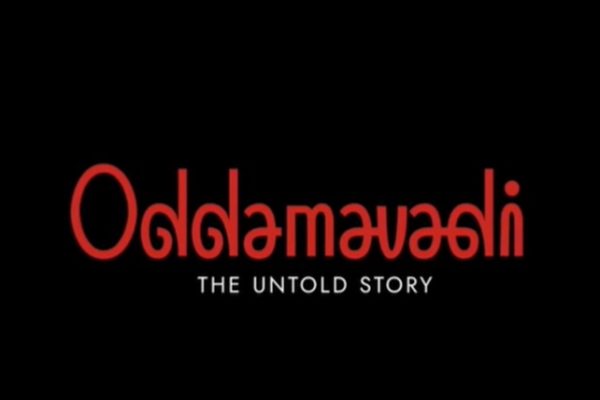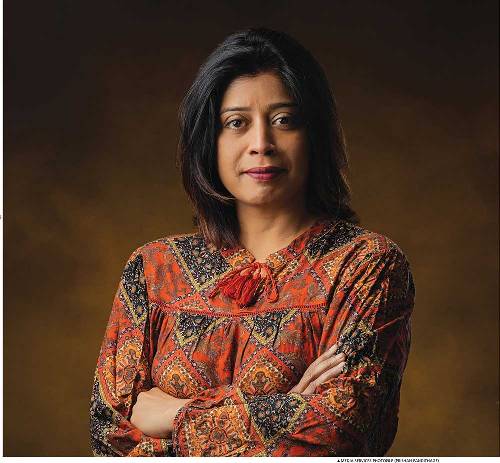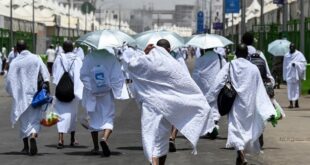Source from – http://www.dailymirror.lk/print/index.php/opinion1/10710-children-of-a-lesser-god.html Daily Mirror.lk

The forced eviction which took place in Killinochchi and Jaffna in 1990, snatched away the livelihoods of many Muslim civilians who were forced to leave the north by the LTTE, and the scars of having being thrown out of their homes in the dark by the terrorists, remain to this day.
It was late one night in 1990 when N. Fathima heard a loud bang on her front door. Carrying her two month old baby in her arms, she hurried out while the loud noise of shells and gun fire could be heard at a distance.
She knew times were bad and was afraid that her house, which was situated in Killinochchi would be burnt down if she did not open the door.
Just a few days ago, her neighbour's son had been killed in front of a crowd when he had refused to obey the terrorists' command.
When Fathima unbolted the door that night, she knew her life was about to change for the worse and she was right.
Standing their, in her doorway were five armed LTTE cadres. Pushing her aside, they stepped in and barged into all her rooms. Afraid to say anything, she watched in silence.
He husband and two daughters who had been fast asleep had been dragged out and kept kneeling near them.
"You have two hours to get out of this town. We do not want to see any of you here. This is not your town," one of the LTTE cadres said.
"Leave now," the other shouted before all the cadres stormed out.
Fathima’s story
Fathima knew the threats could not be ignored. They had to leave. She had heard of the massacres caused by the LTTE.Without saying anything to her husband, she started packing whatever she could.
"We were just given two hours notice. I immediately took whatever I could and told my husband to dress up the girls. With a two month old baby in my arms and some tattered clothes on my husband's shoulders, we left with our children. We vacated our home not knowing where to go," Fathima said.
Fathima, her husband and her children forced out of their home, thought they were alone. However they were wrong.
After they made their way towards the bus stand, not once looking back at the home they had left behind, they realized that hundreds of other families had already lined up to take the buses which drove out of Killinochchi that night.
Communal eviction
It was then that reality struck. The LTTE had given notice to almost all the Muslims to leave Killinochchi. It was a communal issue.
"It was because of our religion that they wanted us to leave. They wanted to clear Killinochchi of Muslims. Little did the terrorists realize that we had been living in Killinochchi for years and that that was our home," Fathima cried.
There was little that any of the civilians could do that night, other than leave timidly while the armed LTTE cadres stood guard at every point.
Sri Lanka's bloody civil war, fought between the military and the LTTE had already begun and everyone knew that the LTTE was a ruthless terrorist organization. Going against them would only mean one thing – death.
Fathima heard many ladies crying while they got into the buses which were lined up for them. "It is not easy to leave your home with no money in your hand. We did not know what our future held. We all had little children. Where were we to go?" Fathima cried.
Hundreds of Muslim civilians who were forced out of their homes that night decided to head for Puttalam. Some had relatives their and the other's had some confidence in the government. They travelled for hours that night and finally after two days reached Puttalam. That was a start to a new life.
"Once we got to Puttalam, many of us were still afraid. We did not know if we would be welcome here. But we settled in the temporary shelters given to us by the authorities. We had to .We had no choice," Fathima said.
Today, twenty years later, Fathima still lives in Puttalam with most of the Muslim civilians who left with her from Killinochchi. Although she is happy to have fled from the LTTE, she still remains in the same shelter which was provided to her by the authorities twenty years ago.
Her husband died a few years ago and her children have now grown up. She now lives with her sister and daughters and says life is difficult but she has to survive for the sake of her children
 "My husband has died and I now earn a living by carrying salt bags. I am old but continue to work because I do not want to depend on the government. I earn some money at the end of the day and send my youngest daughter for tuition. She does not want to fail and I try to provide her with everything possible," Fathima says.
"My husband has died and I now earn a living by carrying salt bags. I am old but continue to work because I do not want to depend on the government. I earn some money at the end of the day and send my youngest daughter for tuition. She does not want to fail and I try to provide her with everything possible," Fathima says.
While her life continues, she however says that the scars of that dreaded night, having being forced out of her home in Killinochchi, still continue to haunt her Despite the war coming to an end, she says she never wants to return back to Killinochchi. "The days of the war were terrible. I never want to go back home. It's been 20 years and I am now happy here. I do not have much but at least I will not be dragged out of my home in the middle of the night," Fathima said.
LTTE killed many civilians
The LTTE, which was founded in May 1976, waged a violent secessionist campaign that sought to create Tamil Eelam, an independent state in the north and east of Sri Lanka and the campaign killed thousands of innocent civilians in this tiny island.
While the LTTE were involved in the most ruthless suicide missions and massacres in Sri Lanka for over 30 years, they were also responsible for displacing thousands of civilians who were forced out of their homes in just a matter of hours.
The eviction which took place in Killinochchi and Jaffna in 1990, snatched away the livelihoods of many Muslim civilians who were forced to leave the north by the LTTE,
Kapoor’s Story
"We were just given a few hours notice by some armed LTTE cadres who stormed into our houses one night and told us to get out. We just took whatever we could and left. We had heard of the LTTE massacres and were afraid to say 'no'," Kapoor, who was evicted from his home in Jaffna said.
Kapoor who was only a small child then, remembers walking with hundreds of other Muslims that night, running away from their homes as fast as possible. Afraid, he saw his mother wiping the tears as she carried only a few clothes on her shoulder.
"At nights we could hear the noise of loud explosions," he said. "It was a terrible period. We are now happy here in Puttalam. I got married here and now my children are growing up here. We only want a decent house now," Kapoor said.
Ummah’s Story
Nahur Ummah who also shares a very smiliar story says that she is now happy in Puttalam and does not want togo back to Jaffna. "Our husbands have gone back to Jaffna. The females have remained back in Puttalam. Life is tough but we remember those dreadful days everyday," Ummah said.
A failed ceasefire
When the LTTE's first major attack was carried out on July 23, 1983 when they ambushed a Sri Lanka Army troop transport outside Jaffna leading to the Black July riots, many civilians in the north and east knew it was the start to a bloody conflict.
However they could not leave their homes and waited silently as an all out war broke in their provinces. Peace talks between the LTTE and the government began in Thimphu, Nepal in 1985, but talks soon failed, and the war continued.
In 1986 many civilians were massacred as part of this conflict. In 1987, government troops pushed the LTTE fighters to the northern city of Jaffna. In April 1987, the conflict exploded with ferocity, as both the government forces and the LTTE fighters engaged each other in a series of bloody operations.

The violence continued, as the LTTE continued to massacre innocent villagers living in the deep rural Eastern and North-Eastern areas. The Dollar and Kent Farm massacres, where hundreds of men, women and children were attacked during the night as they slept are two clear examples of the ruthless acts of terrorism by the LTTE.
The LTTE used these terror tactics to scare Sinhalese and Muslim farmers away from these areas and swiftly took control of significant parts of the North, in a clear act of ethnic cleansing in Sri Lanka.
A tentative ceasefire held in 1990 as the LTTE occupied itself with destroying rival Tamil groups while the government cracked down on the JVP uprising. When both major combatants had established their power bases, they turned on each other and the ceasefire broke down. The government launched an offensive to try to retake Jaffna.
"We were forced out of our homes just before the government tried to take back Jaffna. It was a terrible conflict. We are happy now that those days are over," S.M. Supiyan who witnessed the early part of the conflict as a little boy said.He too has now settled in Puttalam with his family and children.
While hundreds of civilians in Puttalam continue to live in temporary shelters, they say they do not want to go back home to the north. The only request they now ask for is a decent home for their children.
Twenty years of living in temporary shelters, these civilians now fear they are a 'forgotten community'.
Shortage of housing material
Deputy Minister of Resettlement, Vinayagamoorthi Muralitharan speaking to Daily Mirror online said that all steps were being taken by the government to resettle the IDPs and resettlement would be complete within the next three months. "We are well aware of the atrocities committed by the LTTE and how civilians were forced out of their homes in the middle of the night. We are now clearing the north, as there is a great extent of land which was still infested with landmines. Once that is done, we will give clearance to the civilians to go back to the north," Minister Muralitharan said.
 However he added that while most of the properties and houses were damaged in the 30 year conflict, there was a shortage of housing material which is why resettlement in the cleared areas had also been delayed.
However he added that while most of the properties and houses were damaged in the 30 year conflict, there was a shortage of housing material which is why resettlement in the cleared areas had also been delayed.
In a bid to overcome this shortage, Minister Muralitharan said that he would soon hold a meeting with the ambassadors in Colombo and seek help from the international community to provide the necessary materials as soon as possible.
"I am going to meet the ambassadors soon and discuss this issue. We have to provide houses for the civilians as soon as possible," Minister Muralitharan said.
He added that thousands of civilians had already been resettled in the houses provided by the government and it was only a few thousand remaining to be resettled. "Most of the civilians have gone back home and have started their livelihoods.
Those who do not want to go back, are not being forced to. They can remain where they are. We will provide them with suitable houses," Minister Muralitharan said.
Flash back
About 75,000 Muslims were evicted in October 1990 from the northern districts of Jaffna, Mannar, Kilinochchi, Mullaithivu and some parts of Vavuniya by the now-defeated Liberation Tigers of Tamil Eelam (LTTE), who were fighting for an independent Tamil homeland.
 Muslims who were living in more than 153 locations in fairly large numbers in the Jaffna District. Jaffna town had the largest concentration of nearly 90 percent of the total Muslims in the peninsula. Moor Street of Jaffna was an educational and cultural centre of the Muslims.
Muslims who were living in more than 153 locations in fairly large numbers in the Jaffna District. Jaffna town had the largest concentration of nearly 90 percent of the total Muslims in the peninsula. Moor Street of Jaffna was an educational and cultural centre of the Muslims.
Moor Street had 17 mosques, six government schools, four large Quran and Arabic Madrasas (Schools) and many other institutions, fostering the Muslim religion and culture. The economic activities of Muslims in Jaffna were influenced by the city.
LTTE political wing leader B. Nadesan had said that it was some evil forces within the group that were responsible for the eviction of thousands of Muslims from Jaffna.
In an interview published in the Tamil Nadu-based family magazine Kumudam, Nadesan said:
"Jaffna Muslims are our brothers. They are our flesh and blood. It was some evil forces which tried to bring our organization into disrepute that evicted them from Jaffna. At that time, our leader Prabhakaran was in a remote location due to security reasons. When he heard about the incident, he ordered that tough action be taken against those who ordered the eviction of the Muslims from Jaffna.
Twenty years on and hundreds of Muslim IDPs who were forcefully evicted by the LTTE from the north, continue to languish in Puttalam. Still living in temporary shelters, they speak of their plight, fears and the hope for a better future. Read story (http//www.dailymirror.lk/index.php/component/content/article/133 -human-interest/3795-children-of-a-lesser-god.html)
Post Disclaimer | Support Us
Support Us
The sailanmuslim.com web site entirely supported by individual donors and well wishers. If you regularly visit this site and wish to show your appreciation, or if you wish to see further development of sailanmuslim.com, please donate us
IMPORTANT : All content hosted on sailanmuslim.com is solely for non-commercial purposes and with the permission of original copyright holders. Any other use of the hosted content, such as for financial gain, requires express approval from the copyright owners.
 Sri lanka Muslims Web Portal Sri Lanka Muslims News Center
Sri lanka Muslims Web Portal Sri Lanka Muslims News Center



